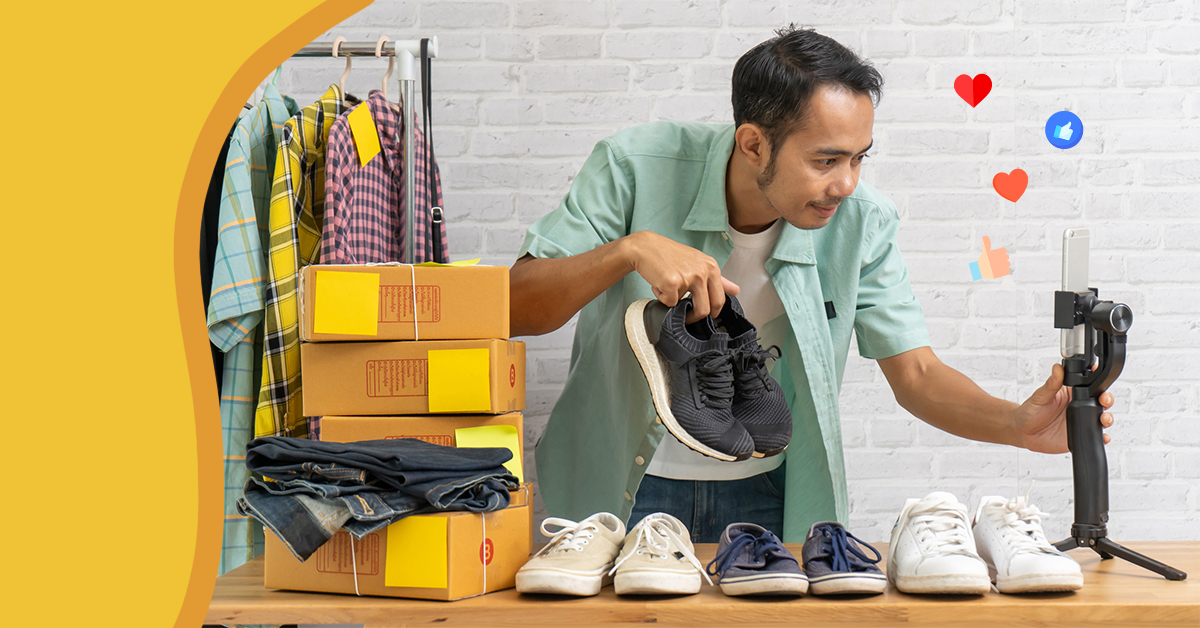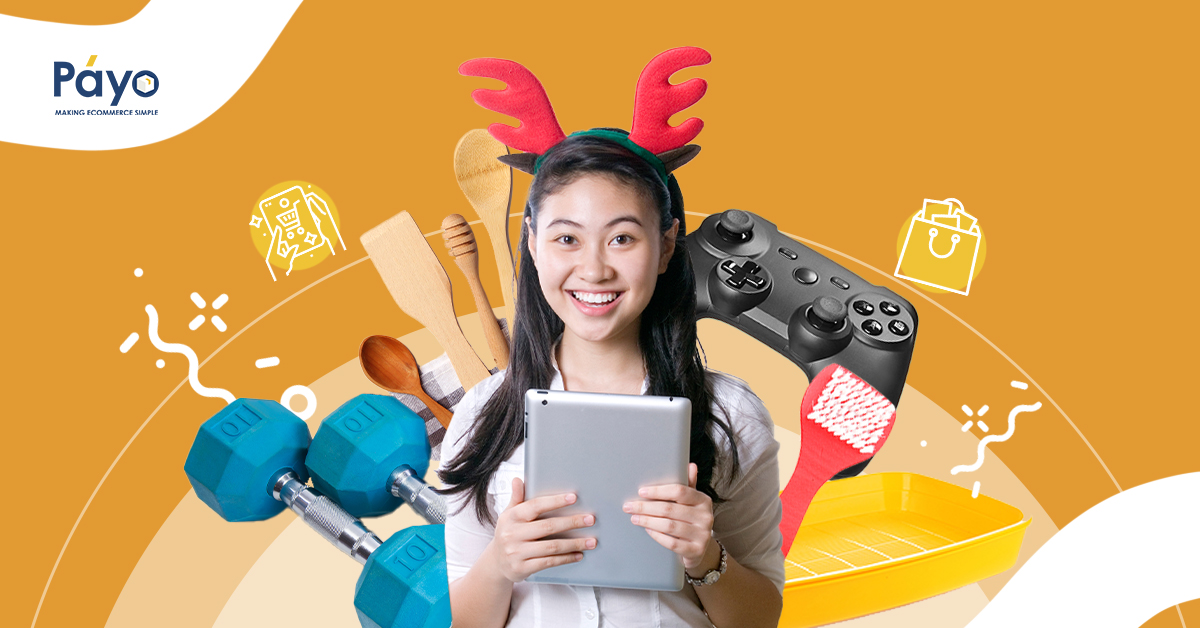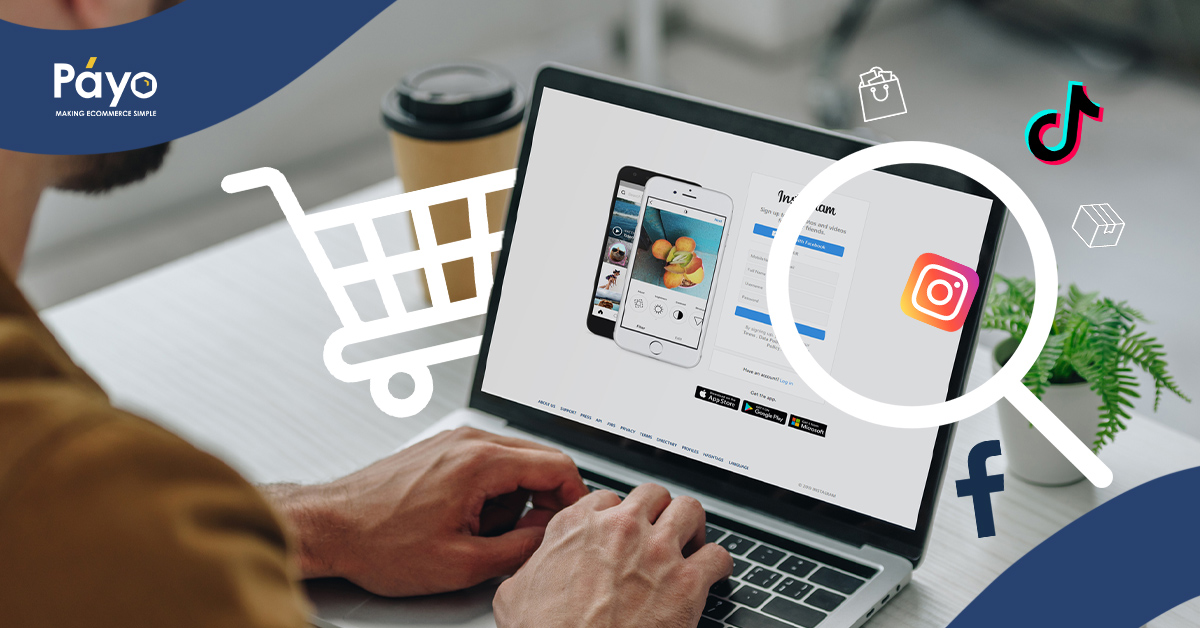When you hear about live streaming, what usually comes to mind are gamers speedrunning tasks or celebrities doing live Q&A. But what about live selling? The rise of E-commerce has not only seen a shift in consumer behavior, but also in selling tactics and approaches. One of them is live E-commerce, where cash on delivery in the Philippines really comes handy.
Live E-commerce, better known as ‘live selling’ in the Philippines, is another way of selling your products as if you were a sales promotion agent in the mall or a store. Done in various social media platforms, merchants can sell a variety of items like clothes, toys, books, and houseware from a span of an hour to about five to six hours straight via a live video stream.
According to Techcrunch, livestream E-commerce started in China in the last few years. In 2019, 265 million Chinese online shoppers made purchases on livestream. This number almost doubled in 2020, with an estimate of 560 million people.
Live selling in the Philippines has also seen a quick spike in terms of patrons. According to livestream shopping company Shoppertainment Live, Inc., they have seen a 200% growth year on year with a conversion rate of 2% to 10% every hour.
But why have Filipinos taken a strong liking to live selling both as consumers and as merchants? Find out here!
Why is Live Selling so popular in the Philippines?
Everyone’s online
Because of the pandemic, almost everyone has migrated to the digital space for their needs be it personal, work, or even home-related. Since both consumers and merchants have zero or limited access to physical stores, they also turn to the virtual marketplace, including live selling.
In-person-like shopping experience
The absence of physical stores has led to a bustling digital marketplace. With live selling in the Philippines, consumers have an opportunity to examine the products being sold similar to how they would do it in stores, only this time it’s through their phone or desktop screens.
They can also ask the merchants questions about the quality, price, delivery mode, and even cash on delivery as a payment option, and they would get real-time answers.
Better promos and discounts
While E-commerce sites offer great deals and promos, merchants can sell their products at more affordable rates to entice customers to buy from their store during live selling sessions. From having bundles or even big discounts, Filipinos surely benefit from this experience.
Thrill of the game
Live selling can also be competitive among customers, especially when hot items are being sold. Such is the case for toys and other products that have limited quantities or limited time offers.
By simply keying in ‘mine’ plus whatever code the merchant says, an item is already yours upon acknowledgement. This makes it all the more rewarding, especially when several customers are eyeing the same item. Some merchants also do live bidding, especially for rare finds.
What’s great about live selling in the Philippines is that almost anyone can do it.
Whether you are a small-time business who’s operating at home or a large-scale enterprise, as long as you have products to sell, you will surely make a sale once you find your market.
What is Live Selling?
Live selling is a modern e-commerce method where sellers showcase and sell products in real-time through live streaming. It combines the interactivity of live broadcasts with the convenience of online shopping.
Why It Matters
Imagine watching your favorite TV shopping channel, but with the added benefit of instant interaction. You can ask questions, get immediate answers, and even see product demos on the spot. That’s the magic of live selling.
How It Works
- Platform Selection: Sellers choose a platform suitable for their audience. Popular choices include Facebook Live, Instagram Live, and dedicated e-commerce platforms like LazLive.
- Broadcast: The seller goes live, presenting products and engaging with viewers.
- Interaction: Viewers can ask questions, request close-up views, or even haggle prices.
- Purchase: Once convinced, viewers can make instant purchases, often through integrated payment systems.
Top Platforms for Live Selling in the Philippines
Choosing the right platform for live selling depends on your target audience, product type, and personal comfort with the platform’s features. Whichever you choose, remember to engage, interact, and most importantly, have fun while selling!
1. Facebook Live
Facebook Live is a feature on Facebook that allows users to broadcast videos in real-time to their followers.
Why Use It?
- Massive Audience: As of 2023, Facebook had 3.03 billion monthly active users globally.
- Versatility: Suitable for all types of businesses, from fashion to tech.
Tips for Beginners:
- Schedule Broadcasts: Announce your live sessions in advance to gather more viewers.
- Engage with Comments: Interact with your audience by answering questions and acknowledging comments.
2. Instagram Live
A feature within Instagram Stories, Instagram Live lets users stream video content to their followers.
Why Use It?
- Younger Demographic: Instagram is popular among millennials and Gen Z.
- Visual Appeal: Perfect for visually appealing products like clothing or art.
Tips for Beginners:
- Use Filters: Enhance your video quality with built-in filters.
- Collaborate: Host joint live sessions with influencers or complementary brands to expand reach.
3. LazLive on Lazada
LazLive is Lazada’s integrated live streaming feature, allowing sellers to showcase products directly within the app.
Why Use It?
- E-commerce Integration: Seamless transition from viewing to purchasing.
- Regional Reach: Lazada is a major e-commerce player in Southeast Asia.
Tips for Beginners:
- Offer Flash Sales: Limited-time offers can drive immediate purchases.
- Utilize Lazada Promotions: Take advantage of platform-specific promotions to boost visibility.
4. Shopee Live
Shopee Live is Shopee’s in-app live streaming feature, designed to enhance the shopping experience.
Why Use It?
- Direct Sales: Integrated shopping cart for instant checkouts.
- Growing Popularity: As of 2023, Shopee is a leading E-commerce platform in Southeast Asia.
Tips for Beginners:
- Engage with Shopee Coins: Reward viewers with Shopee Coins to encourage purchases.
- Highlight Exclusive Deals: Promote live-only discounts to attract and retain viewers.
5. TikTok Live
TikTok Live allows users to stream real-time videos to their followers on the TikTok platform.
Why Use It?
- Young Audience: TikTok targets Gen Z and younger millennials.
- Viral Potential: High chance for content to go viral.
Tips for Beginners:
- Use Trending Hashtags: Increase visibility.
- Engage with Challenges: Participate in or create trending challenges to attract viewers.
6. YouTube Live
YouTube Live offers real-time streaming, making it suitable for product launches and tutorials.
Why Use It?
- Diverse Audience: YouTube caters to a wide range of demographics.
- Monetization Options: Super chats allow viewers to pay creators during live streams.
Tips for Beginners:
- Schedule Streams: Notify subscribers in advance.
- Engage with Super Chats: Acknowledge and thank viewers who use super chats.
Setting Up for Live Selling
Setting up for live selling is a blend of technical setup and presentation. With the right tools and a bit of preparation, you can create an engaging and professional live selling environment.
Step 1: Choosing the Right Platform
The platform you choose sets the stage for your live selling journey. It’s where your audience meets your products.
Factors to Consider:
- Audience Demographics: Platforms like Instagram and TikTok cater to younger audiences, while Facebook and YouTube have a broader demographic reach.
- Product Type: Visual platforms like Instagram are great for fashion, while YouTube might be better for detailed product demos.
- Ease of Use: Some platforms offer integrated e-commerce features, making the buying process smoother.
Research each platform’s user base and features. Consider where your target audience spends most of their time online.
Step 2: Equipment and Setup Essentials
Quality equipment can significantly enhance the viewer’s experience, making your products more appealing.
Camera and Microphone
- Camera: A clear video feed is crucial. While smartphones offer good quality, consider investing in a dedicated webcam or DSLR for better clarity.
- Microphone: Clear audio ensures your audience understands product details. Opt for a clip-on mic or a standalone microphone for better sound quality.
Test your setup before going live. Ensure there’s no lag, and both video and audio are clear.
Lighting
- Importance: Good lighting can make products look more appealing and professional.
- Options: Ring lights are popular for live selling due to their even illumination. Alternatively, softbox lights can also provide a professional look.
Position lights at a 45-degree angle to your face to avoid shadows. Adjust brightness to suit your environment.
Background and Ambiance
- Background: Choose a clean, uncluttered background. Consider using backdrop stands or themed backgrounds relevant to your products.
- Ambiance: Add elements like plants or art pieces to make the setting more inviting.
Ensure your background isn’t distracting. The focus should always be on you and your products.
Step 3: Inventory Management and Display
How you manage and display your products can influence purchasing decisions.
Key Points:
- Organization: Keep products organized. Use shelves or tables to display them.
- Product Tags: Label products with price tags and details. This helps viewers identify and inquire about products quickly.
- Restocking: Ensure you have enough stock. Running out of products during a live sale can be a missed opportunity.
Keep a list of products you’re showcasing. This helps in providing quick information and managing sales efficiently.
Best Practices for Live Selling in the Philippines
Live selling is a blend of presentation, interaction, and salesmanship. By following these best practices, you can ensure a successful and rewarding live selling experience.
1. Engaging with the Audience
Engagement is the heart of live selling. It’s the bridge between you and potential customers.
Key Points:
- Active Interaction: Respond to comments and shout out to viewers joining the stream.
- Q&A Sessions: Dedicate time to answer product-related questions.
- Polls & Quizzes: Use them to gather feedback or simply entertain.
Keep the energy high. Your enthusiasm can be contagious and can drive sales.
2. Pricing and Promotions
Competitive pricing and timely promotions can boost sales significantly.
Key Points:
- Transparent Pricing: Clearly display product prices to avoid confusion.
- Flash Sales: Offer limited-time discounts during the live session.
- Bundling: Group related products together at a discounted rate.
Research competitors’ prices before setting yours. Ensure you offer value while maintaining profitability.
3. Handling Inquiries and Comments
Addressing inquiries promptly can be the difference between a sale and a missed opportunity.
Key Points:
- Immediate Response: Aim to answer questions as they come in.
- Pin Important Comments: Highlight frequently asked questions or important information.
- Manage Trolls: Stay professional. If someone is disruptive, consider blocking or muting them.
Prepare a list of anticipated questions and their answers. This helps in providing quick and consistent responses.
4. Building Trust and Credibility
Trust is the foundation of any successful sale, especially in a virtual environment.
Key Points:
- Live Demos: Showcasing products in action can alleviate doubts.
- Testimonials: Share positive reviews or feedback from past customers.
- Authenticity: Be genuine. Avoid overhyping products.
Consider offering a return or exchange policy. This reduces purchase hesitations and builds trust.
5. Managing Sales and Transactions
Smooth transactions ensure a positive shopping experience for your viewers.
Key Points:
- Integrated Payments: Use platforms that allow instant purchases during the live session.
- Clear Instructions: Guide viewers on how to make a purchase.
- Order Confirmation: Acknowledge purchases during the live to instill confidence.
After the live session, send out confirmation emails or messages with order details to reassure customers.
Key Challenges in Live Selling
While live selling offers numerous opportunities, it’s not without challenges. By anticipating these hurdles and preparing accordingly, you can navigate the world of live selling with confidence and success.
1. Internet Connectivity Issues
A stable internet connection is the backbone of live selling. Any disruption can hinder the shopping experience.
Key Points:
- Dropped Streams: Weak connectivity can lead to interrupted broadcasts.
- Lagging Video: Slow internet speeds can result in video delays, causing miscommunication.
Invest in a reliable internet connection. Consider having a backup connection or mobile data ready. Regularly test your speed before going live.
2. Competition and Market Saturation
The popularity of live selling means more sellers are vying for attention.
Key Points:
- Increased Competition: More sellers lead to a fight for the same audience.
- Differentiation Challenges: Standing out becomes harder as more sellers offer similar products.
Carve out a niche for yourself. Focus on unique products or selling points. Regularly analyze market trends to stay ahead.
3. Handling Negative Feedback and Trolls
Not all feedback will be positive, and not all viewers will be supportive.
Key Points:
- Negative Comments: Some viewers might express dissatisfaction or critique.
- Trolls: Some users intentionally disrupt streams with irrelevant or harmful comments.
Stay professional. Address genuine concerns and consider using moderation tools to manage disruptive viewers. Remember, every comment is an opportunity to showcase your brand’s values.
4. Ensuring Product Quality and Delivery
The promise of live selling is immediate transparency, but post-purchase, quality and delivery become paramount.
Key Points:
- Product Expectations: What viewers see should match what they receive.
- Delivery Delays: External factors can lead to delivery issues, affecting customer satisfaction.
Regularly inspect your inventory for quality. Partner with reliable delivery services and provide customers with tracking information. Clear communication can mitigate potential dissatisfaction.
Luckily, Payo is here to support you on your live selling venture no matter what size your business is. In need of Warehousing and Fulfillment or Customer Support? You can count on Payo to assist you on these live selling essentials, especially if you want to offer cash on delivery here in the Philippines.
Want to level up your live selling game? Sign up with Payo today or send us a message at [email protected]. We’ll get in touch with you soon!











